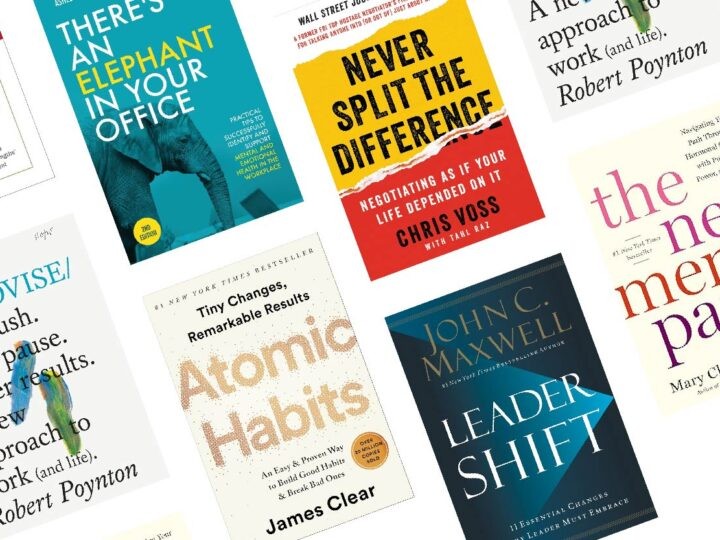 2021 is coming to a close, and it’s time for our annual list of well-being predictions to watch for in 2022. Now in our second year of the COVID-19 pandemic, we continue to expand our knowledge about what employees truly need when it comes to their well-being—and how to best deliver that support. Here’s how we see well-being evolving over the next year.
2021 is coming to a close, and it’s time for our annual list of well-being predictions to watch for in 2022. Now in our second year of the COVID-19 pandemic, we continue to expand our knowledge about what employees truly need when it comes to their well-being—and how to best deliver that support. Here’s how we see well-being evolving over the next year.
2021: The year of learning and growing.
This past year has allowed us to peel back the layers of employee well-being even further. For example, the acknowledgment that our mental health is just as important as our physical health—so much so that the C-suite is now openly talking about mental health and pushing for greater employee support. Employers now understand that workplace engagement and productivity are as much related to how we live outside of work as to what we do during the workday. How not everyone has the same access to healthcare, resulting in an unlevel playing field. And how employees are using their voices to dictate how, where, and when they work.
All of this translates to well-being. But a different kind of well-being. While still important, we’re moving beyond biometric screenings and step-counting to a more holistic look at what makes a person truly happy and healthy. It’s all a bit “squishy,” to use an unscientific term. And we’re going to have to be OK with not being able to measure it precisely.
So, despite the devastation of COVID-19, we are learning and growing in the well-being industry. It’s an exciting space to be in right now. I hope you enjoy reading and wish everyone a happy, healthy, and balanced holiday season!
Trend 1: The mental health revolution.
After a year of uncertainty, reaction, and scrambling to provide resources, mental health is finally becoming intentional.
Stress, anxiety, depression, burnout. Americans were suffering from these mental health concerns before, but the impact of the COVID-19 crisis has magnified them. The Kaiser Family Foundation reports that about 4 in 10 adults in the U.S. have reported anxiety or depressive disorder symptoms during the pandemic. This is up from one in ten adults who reported these symptoms from January to June 2019.
To help, employers steered struggling employees to Employee Assistance Programs (EAPs) or other mental health resources they may have had at the time. It soon became apparent, however, that this would not be enough. Hence what I’m calling the “mental health revolution.”
Getting intentional.
Mental health lives on a spectrum. There are times when we need professional assistance from a mental health counselor. But we all have lower acuity mental health issues that we deal with every day—like stress and anxiety—that need tending on a regular basis. Call it “preventive care for mental health,” or what we do to stop symptoms from becoming a full-blown mental health crisis.
And so companies are responding with more “intentional” and holistic benefits and programs that will allow each individual to use and interact with offerings based on their personal mental health needs. This could include:
- On-demand telephonic 1:1 mental health coaching support
- Mental health apps
- Text-based access to mental health counselors
- Training in stress management and resilience
- Meditation and mindfulness programs or apps
- Social media support groups
- Podcasts
- Group-based support that builds a community
Training programs will spike, and cultures will change.
We’re also going to see an increased emphasis on training leaders and managers to create a culture that supports mental health. As we know, throwing a bunch of mental health resources at employees won’t move the needle if the culture doesn’t change. Unrelenting work demands, inflexibility, and lack of support are common reasons employees are stressed. So companies need to take a hard look at workplace practices. Managers also need relevant training on how to have conversations with employees about mental health—a subject that many may be uncomfortable with.
And one last comment. Employees are expecting mental health support from their employers. In fact, 7 in 10 people believe employers should offer a mental and emotional health program.1 So it only makes sense that the organizations that take a more intentional approach to mental health will reap the benefits—better retention, productivity, engagement, morale, and so much more. All that to say, an intentional approach to mental health is here to stay.
Trend 2: 2022 will be the year of the employee.
Employees will continue demanding a more “human” work experience to bring their whole selves to work.
The “Great Resignation” among U.S. workers continues to gain strength, with people quitting more frequently. Suffice to say, there’s been a reckoning of sorts in what workers feel they should tolerate. And also a sense that employers should recognize their human side—beyond what they do for a living. Layered onto this is the most radical change to hit the workforce in a century: the fact that we’ll probably never go back to a time when people are in the office five days a week, eight hours a day.
And so, employers have had to regroup and consider how to create an employee experience where people can bring their whole selves to work, feel supported, and still feel connected enough to stay engaged—all of which are infused with well-being. Ultimately, this “human” element should work to achieve a great workplace experience that results in employee growth, belonging and loyalty.
How will this translate into action in 2022?
Investment in the digital workplace.
With so many organizations opting for a hybrid or completely remote work model, the changing workplace is pushing companies to invest in technology to allow employees to easily and seamlessly exchange information virtually—hopefully preserving the flow of ideas that used to happen around the water cooler. Daily team check-ins and more frequent one-on-ones between managers and direct reports will be essential to keeping the human connection at work alive while supporting the evolution of company culture.
More employee input.
We’ll continue to see employers utilize pulse surveys to get a quick check on well-being. Pulse surveys will also help employers understand what employees value and need to feel supported—more collaboration, social connections, financial wellness, career growth, community service, different well-being incentives, whatever it may be.
A shift in leadership style.
Leaders and managers are getting upskilled to be more empathetic to employee needs. And with good cause. Research shows that employees with managers who demonstrate care, concern, and understanding of their feelings and the circumstances that may influence their work performance are more productive, more engaged, and more likely to stay with a company.2
More transparency to business strategy and increased employee communication.
The increase in employee communication, borne out of necessity at the start of the pandemic, will continue. We’ll see a concerted effort to keep employees in the know about company purpose and vision, programs to support employee well-being, and ways to stay connected remotely.
Blended well-being programming.
Although we’ve successfully shifted much of our own well-being programming to a virtual environment, we believe that some in-person interaction is critical. Look for hybrid experiences—health coaches who meet with people virtually most of the time, but have an in-person check-in once a month; and well-being champions whose activities rally the troops in the office and those who are still remote.
An even more personal approach to well-being.
We’ve always said that there is no one-size-fits-all approach to well-being, and this is truer than ever. Because being “healthy” means different things to different people—especially those of different ethnic, racial, and geographic backgrounds—well-being will become even more personal. This means well-being vendors will need to be flexible and have strong segmentation, integration, and customer service capabilities.
Trend 3: Measuring the unmeasurable.
We’ll become more comfortable “measuring the unmeasurable” of employee well-being.
Amidst the ever-present debate about whether well-being programs really “work,” we’ve always urged our clients to look beyond direct cost-savings and consider the long-term, indirect ways a well-being program can impact the bottom line. Things like retention of key talent, greater employee engagement, higher employee trust and commitment, and a stronger culture. We sometimes refer to it as the “value of investment” (VOI) versus a “return on investment” (ROI).
A new way to measure well-being.
We now see a new way of measuring well-being success on the horizon. It has to do with the fact that as populations become more diverse—and employers shift to a more individualistic well-being approach—what constitutes success will be different for every individual.
To borrow a term from the world of clinical trials, we can think of it as the “n of 1,” which considers an individual patient as the sole unit of observation. Said another way, it’ll be less about measuring specific behavior change and more about a more holistic observation of whether we feel we are thriving, despite what metrics might say.
How success will be measured.
While we certainly won’t abandon VOI and ROI in certain circumstances, we predict we’ll see success measured less in numbers like 80% participant engagement, the number of daily visits, or 5% population weight loss, and more in terms of:
- Accomplishments
- Connectedness
- Culture
- Decreased worries around health
- Feelings
- Healthier personal life
- Inclusivity
- Personal best
- Supporting the “moments” that matter
So, just as mental health is becoming more intentional, we expect that the measurement of well-being program success will also shift—toward a more holistic approach that goes beyond the numbers or wins and losses to consider the impact on a person’s whole life. Gauging success this way also makes room for evaluating programs on things that are increasingly regarded as critical to our well-being, such as flexibility in when, where, and how much we work; social connection; and belonging and inclusivity, which leads to our next prediction.
Trend 4: The expansion of DEI at work.
Organizations will expand diversity, equity, and inclusion (DEI) efforts to encompass “belonging” in the workplace.
The pandemic allowed workers to take a step back and ask themselves some critical questions. Is my work meaningful? Are my values aligned with the company’s mission? Do I feel like I belong here? Does my company value who I am as a person?
The answers were a resounding no for many people, further fueling the “Great Resignation” we mentioned in Trend 2. In fact, a Korn Ferry survey found 36% of professionals say they plan to take a different job in the near future because the pandemic allowed them to re-evaluate what they want and the change they need.
Now, people are bringing their whole selves to work.
The pandemic also upended policies and practices—both written and unwritten—that previously made certain groups of people feel excluded. For example, many employees who felt pressure to change or hide aspects of their cultural or ethnic identity for the workplace no longer felt they needed to. Before the pandemic, the “face time” required in so many workplaces excluded parents who needed to pick up children and introverts for whom long hours in the office were draining.
With remote work, these “norms” largely went away. Working from home also made it okay to reveal parts of our lives that we previously felt needed to be hidden—pets, kids, emotions, and the interesting hobbies now on full view in our Zoom backgrounds. Suddenly we collectively asked ourselves: why did we feel the need to hide so much of ourselves at work? There was no good reason, except for the fact that we’d always done it this way. Luckily, for many organizations, this is no longer the case.
So, while organizations will continue to formally focus on diversity, equity, and inclusion in the workplace, we’ll see these efforts expand to encompass “belonging” and “purpose” as critical components of organizational culture.
DEI efforts can positively impact employee well-being.
Perhaps you’re thinking, what does this have to do with well-being? More than you might think. If there is discord in our values, if we feel we’re not accepted, if we’ve been actively excluded in the workplace—all of these impact, you guessed it, our mental health. Which, as we know, can affect our physical health.
It’s a long way of saying that as part of the movement to care for the whole person, employers will need to consider how employees feel on the job and about working for your company. Look for new initiatives around:
A more human-centered management style.
Leaders and managers will receive training on how to create a sense of belonging in their teams. This includes actively soliciting input from each person in a meeting or call; making space for conversation about employees’ lives outside of work; and regularly recognizing employee accomplishments, both big and small.
Nurturing connections between co-workers.
Yes, this may mean more trivia nights and employee talent shows, but it’s worth it to feel a deeper sense of connection with teammates in a world where remote work is here to stay.
Providing forums for shared experiences.
There’s a reason why employee resource groups (ERGs) are so popular—they provide employees with the support and camaraderie that can often be lacking in a workplace. These groups will continue to have a voice in shaping company culture.
Intentional community-building.
We’ll see a concerted effort to join together in support of a shared goal. Things like volunteer events that are aligned with the company’s mission and vision. And rituals—like a First Friday lunch or randomized meetings to meet someone new from your workplace—to foster a sense of community and belonging.
Sharing corporate purpose.
To help employees feel “connected” to their work, companies will communicate more regularly about their mission and goals and how employees’ daily actions support them.
Trend 5: Digging even deeper into social determinants of health.
The well-being space will dig deeper into the social determinants of health, focusing on achieving greater health equity and promoting systemic change.
Our 2021 predictions discussed how employee health cannot be separated from the “social determinants of health,” which are the conditions that shape and influence employee experiences—including where they’re born, grow, play, learn, work, and pray. This year, we’ll see some additional efforts in this space, with employers working to ensure that all employees have equal access to health care—also known as health equity—and health plans playing a bigger role in employee health, beyond basic healthcare needs.
What is health equity?
According to the U.S. Centers for Disease Control and Prevention (CDC), health equity is achieved when every person has the opportunity to “attain his or her full health potential,” and no one is “disadvantaged from achieving this potential because of social position or other socially determined circumstances.” The CDC believes that health inequities are directly related to how long we live; our quality of life; rates of disease, disability and death; and disease severity.3
The pandemic is a prime example of how our communities influence our overall health. As we know, COVID-19 has disproportionately impacted people of color, women, poor communities, younger generations, those without access to good medical care or health insurance, and those already suffering from underlying conditions like diabetes and obesity.
How will employers and health plans play a role here?
As a recent Business Group on Health report states, “Employers are initiating programs and benefits to improve the circumstances that employees and their families are born into and live, which have an impact on their ability to live healthy and fulfilling lives. By zeroing in on these circumstances, employers can tackle the underlying social and economic challenges that influence overall well-being, with the goal of bringing about systemic change.”
So, what will we see? Here are some predictions:
Greater emphasis on preventive care.
Racial minorities don’t get preventive health screenings at the same rates as white people, leading to higher chronic disease and cancer rates. This has been especially true during the pandemic. Look for increased community outreach by health plans and employers to boost access to critical screenings.
Culturally appropriate healthcare and well-being programs.
Health plans and employers will work with practitioners to provide “culturally appropriate and tailored interventions” that are informed by the shared values, traditions, beliefs, and practices of underserved populations—in the hopes that they lead to greater receptivity to and acceptance of healthcare.4
Expanded access to mental health services.
Cultural barriers exist that prevent some people from seeking mental health support. Increasing health equity will include addressing these barriers to help people get the help and support they need.
Help with food insecurity.
More than 38 million people in the United States are food insecure and lack consistent access to affordable, healthy food. Health plans will work with practitioners to identify food insecure individuals and connect people with community and government assistance. Employers can play a role by subsidizing healthy food at work, providing nutritional counseling, and allowing time off to enroll in government assistance programs.
A continued focus on condition management.
Whether through a health plan or well-being program, condition management programs are critical for helping employees better manage chronic conditions through counseling and nurse lines.
Leveraging technology and digital therapeutics.
These include treatment or therapy that utilizes digital and internet-based health technologies to spur changes in patient behavior. Telemedicine is also a way to use technology to remove barriers to accessing healthcare.
Continued vaccination promotion.
Employers will continue to play a role in providing time off for vaccinations and possible side effects. Health plans will partner with community-based organizations to remove barriers to getting vaccinated.
And, while it’s not technically related to healthcare, we know that financial stress continues to be a huge concern that can lead to repercussions for mental and physical health. Employers will continue to provide services to help with budgeting, saving, debt management, and student loan debt repayment. Finally, access to good childcare is another much-needed service that has worsened in many communities during the pandemic. We’ll see continued employer support through onsite care, backup daycare, and partnering with community resources.
And there you have them, our five well-being predictions for 2022! You probably noticed a common thread running through each of them—namely, that employers and health plans will play a much more significant role in aspects of employees’ lives that were previously considered an employee’s responsibility.
It’s all part of the acknowledgment that we can no longer compartmentalize our lives and well-being into two separate domains—work and home. The lines have been completely blurred and most likely are not returning to a pre-pandemic state.
We look forward to seeing how these workplace wellness trends and predictions play out over the coming year as employers and health plans adjust and respond to new employee demands. If you have any questions or need help navigating your organization’s employee well-being journey, visit our website or contact us at connect@webmd.net.





